Shui-Lyn White is an artist who uses the gestural and textural evocations of paint to explore how we are in the world. Her works delve below the surface of persona to illuminate how we form and inhabit the space called the 'self' - creating an emotional subsurface scattering. Her art practice meditates on how we in our most subliminal form move through time and space to arrive at a place that we can call home. Each art work can be seen as a ‘letter’ inviting the viewer to be grounded in the here and now of their being.
Being an only child on a vast sugar estate in Nigeria and shaped by family histories of migration, exile and war sparked a curiosity into the self and belonging. This led her to question the societal myths and constructs of the self, and to realise the importance of connection over belonging in finding one’s place in the world.
Shui-Lyn’s work reflects her Sino-European-African heritage. Born to a Chinese mother and an English father in Nigeria, she has lived in Ghana, England, France, Australia, Malawi, South Africa and Ethiopia. She is currently based in Cape Town.
We were privileged to visit the studio of artist Shui-Lyn White and have a conversation about her abstract monoprints, her ideas on finding and cultivating creativity, and her plans for the future.
Read the full interview with Shui-Lyn below, watch a short video with the artist in studio and visit her online portfolio to view her available monoprints.
You recently returned from the Cité des Artes residency in Paris, in collaboration with Christiaan Diedericks. Tell me a bit about that experience and how has it affected your creative work since returning to South Africa?
It turned out to be a far more enriching residency than simply making art. I felt it worked out right because I can make art until I go blue in the face here, but I can't have that experience, or be in Paris, or really immerse myself in that world. So that's what I did: for the second month I just did a lot of walking, more art, food, shows, everything I could lay my hands on, so it was a bit of a smorgasbord.
When I came back, I just needed time to integrate and I'm still in that space. I think it's an important space. The trouble is, once you get that big idea and you start working, you're not going to play because you'll know what you want, you're focused. You're not going to do crazy things that may not work because you want to focus on this idea. So I don't have any ideas at the moment. Which is wonderful. I've had years and years of ideas - now I have none. But that really means I can play and make mistakes and I think this is really what's important
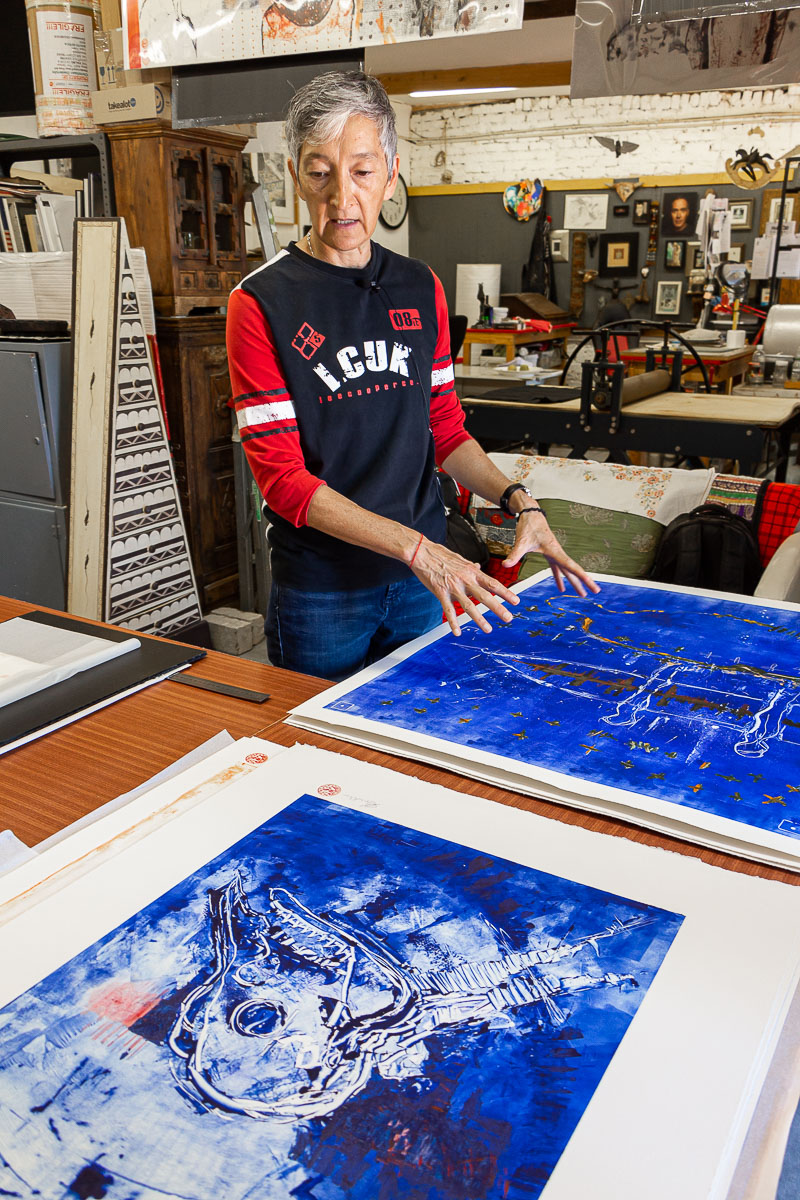
Wow! What an exciting creative space to be in. Can you elaborate a bit on what this process actually looks like for you?
I worked solidly through 2017, 2018, 2019, 2020 and most of 2021. Which means I tend to work on what I know and tend to deepen and refine what I know, and that's wonderful because I feel as if I know something at the end of it.
But there comes a point. We go “what I know now is not enough to get me any further or to continue my journey because I now know it”. You can read the same book over and over and you can get all the meaning from it, but the time comes when you feel, “I need to read another book”. And this is what this is - this is reading another book. Which means you go to the book shop and you pull out a book and you go, “Ooh I like the cover.” “I don't like this story, no,” and you put it back. So that's the filtration: you've got to find something that hooks in with you, where you go, “Oh, this is the book for me.” And maybe you've seen that book before, but you've kind of gone, “Oh, I don't know, it's a bit serious or it's a bit this.” You take it out now and you go, “Oh, this is what I should be reading!” So that is really what the process involves, and for me it is about playing and experimenting with a lot of different gestures.
Recently I've photographed my work and I've put it onto the computer or the iPad and I work on it digitally for fun because when it's on an iPad you're much less precious. If I had to work on this physically I would go, “but I love this! Yeah, I love that part!” … But if I stick it onto the iPad I just go mad because I can erase it and that gives me a chance to see where I can take work, without being too serious about it. So it's losing the preciousness, isn't it?
You know it's the same thing when you get to know something. We get very precious about knowledge and about skill because we want someone to go “Oh, you know so much, you are so skilled, you're amazing!” But you've got to actually chuck all that out and you really want someone to go, “oh, this is terrible” because it means you are on the right track, it means you're breaking it down, you're pushing out, you're getting away from the prison of perfection made in your own mind.
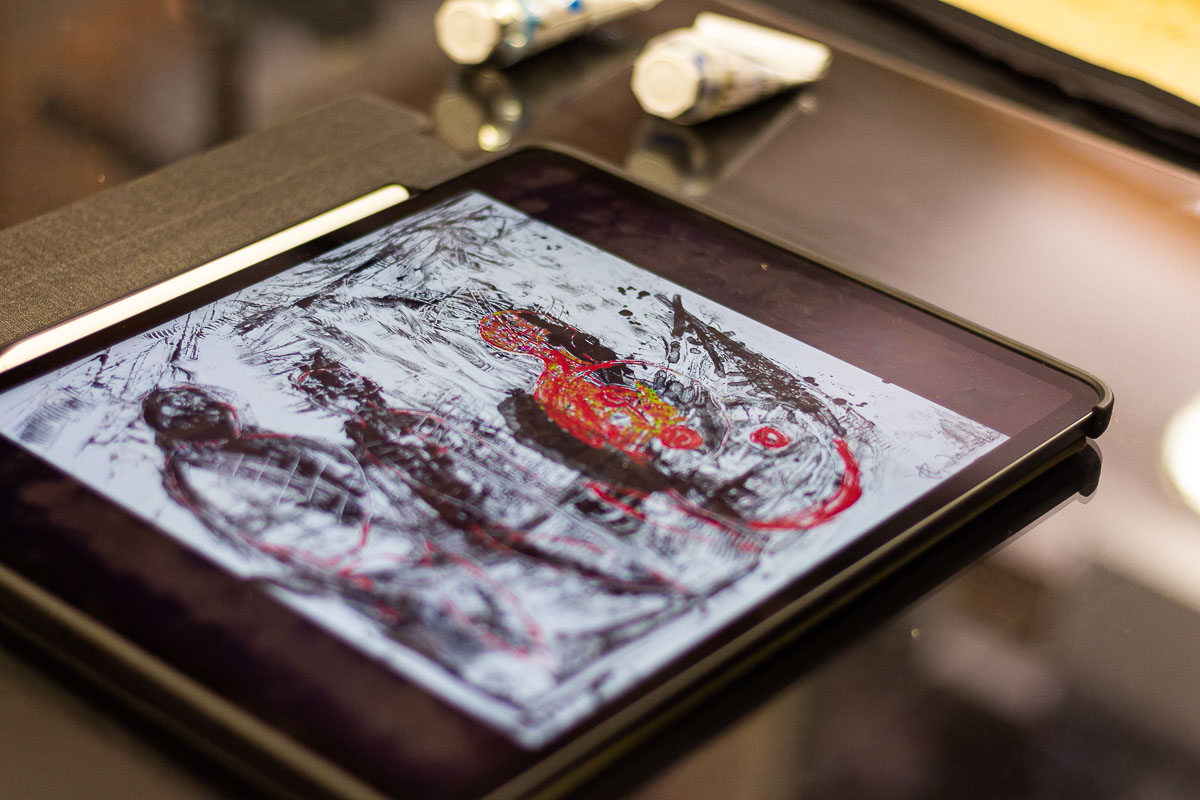
How do you deal with rejection or viewers reacting negatively to your work?
Well just like anyone I don't like being rejected, but basically, I think it's in my DNA because I was brought up half English half Chinese, from Nigeria. And then when I first encountered society it was in the form of a boarding school in Kent in England. There was a lot of rejection! I think it worked well for me because I've never really belonged anywhere, I don't have a nationality, I don't have a culture. Even here, I'm South African, but I'm not really because I speak like this or I have this history, so you know - it's wonderfully freeing.
The other really freeing thing is I think about how there are so many amazing, gifted, talented, great, good artists out there. I don't have to be one of them: it's covered, it's done. People are doing incredible stuff. Why would I have to do it? I might as well go out and just find out what works for me, and if it doesn't work for anyone else, well, that's fine. I don't work for anyone else, so the chance of my art working for anyone else is quite slim.
There are lots of people who do all sorts of things and I wish them well, because then I don't have to do them. Thank goodness I do not have to be ‘the great artist’. There are so many wonderful ones who are so great - and yay for them! And there are so many artists out there saving the world and spreading a message and I don't have to do that either, I can just get on with doing what I do - not necessary even best - but just what I do and maybe one person likes it. Or maybe nobody likes it.
It is that same dilemma when you want to be liked and then you become someone you're not, and you become someone you don't particularly like yourself. So I'd say probably the first thing is to be someone you like. And for me it is to do something I like and that I like doing and if the work is okay but I enjoyed the process, then that is fine.
"I think about how there are so many amazing, gifted, talented, great, good artists out there. I don't have to be one of them: it's covered, it's done. People are doing incredible stuff... I might as well go out and just find out what works for me, and if it doesn't work for anyone else, well, that's fine."
What art making are you focusing on at the moment?
I am looking at some of my older works – some of these I started in 2017, so I'm just revisiting a lot of stuff, to see what I was doing, to see if it still speaks to me. Because I think all this work represents almost a mapping of my own life, like a diary. And there is some work that I can't do anymore - because that gesture, that emotion, that way of moving in the world or being in the world, it just doesn’t fit with me anymore.
I think the work I seek to express or create is that ‘being’ in the world at that time and that's really the only thing that I can put on paper or on a canvas. Which is why I think developing a style and knowledge can start to become a limiting factor because it stops being about who you are now and becomes about what you've learned, which is, as you notice already, past tense. And it's very important for me that the present tense is very important, because that's where we're at now.
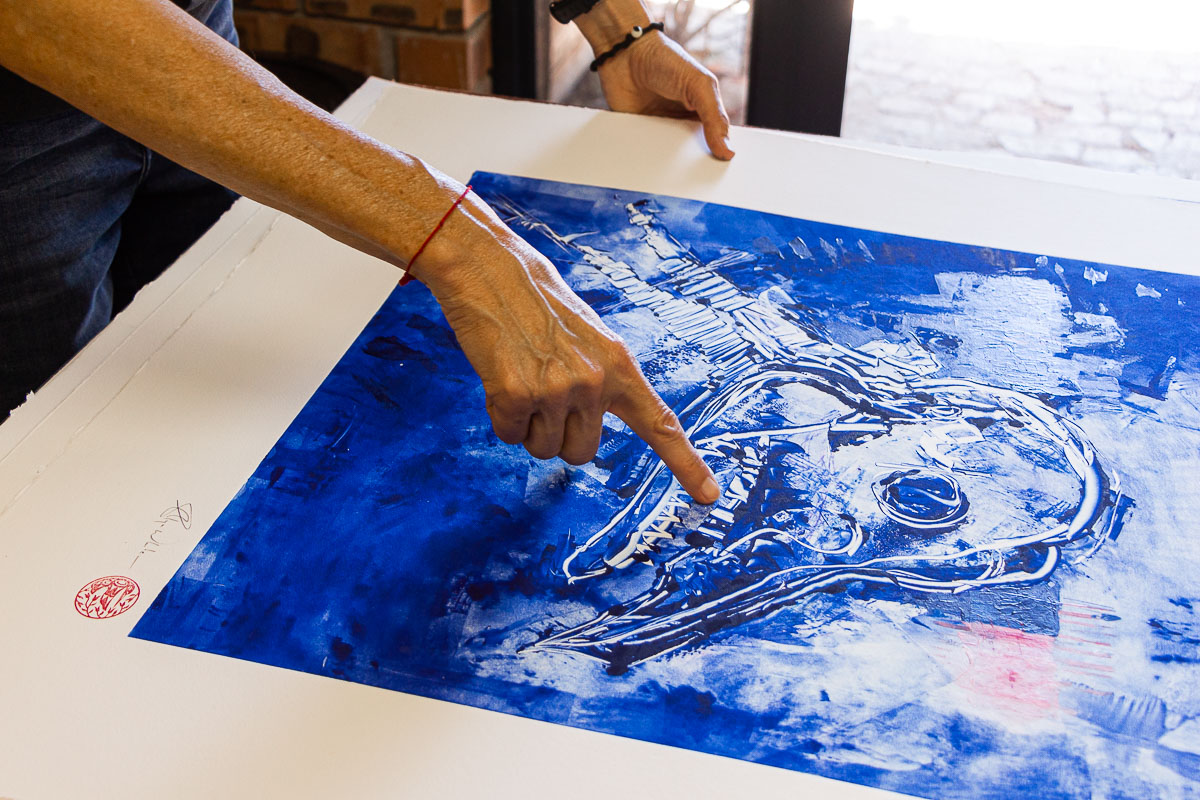
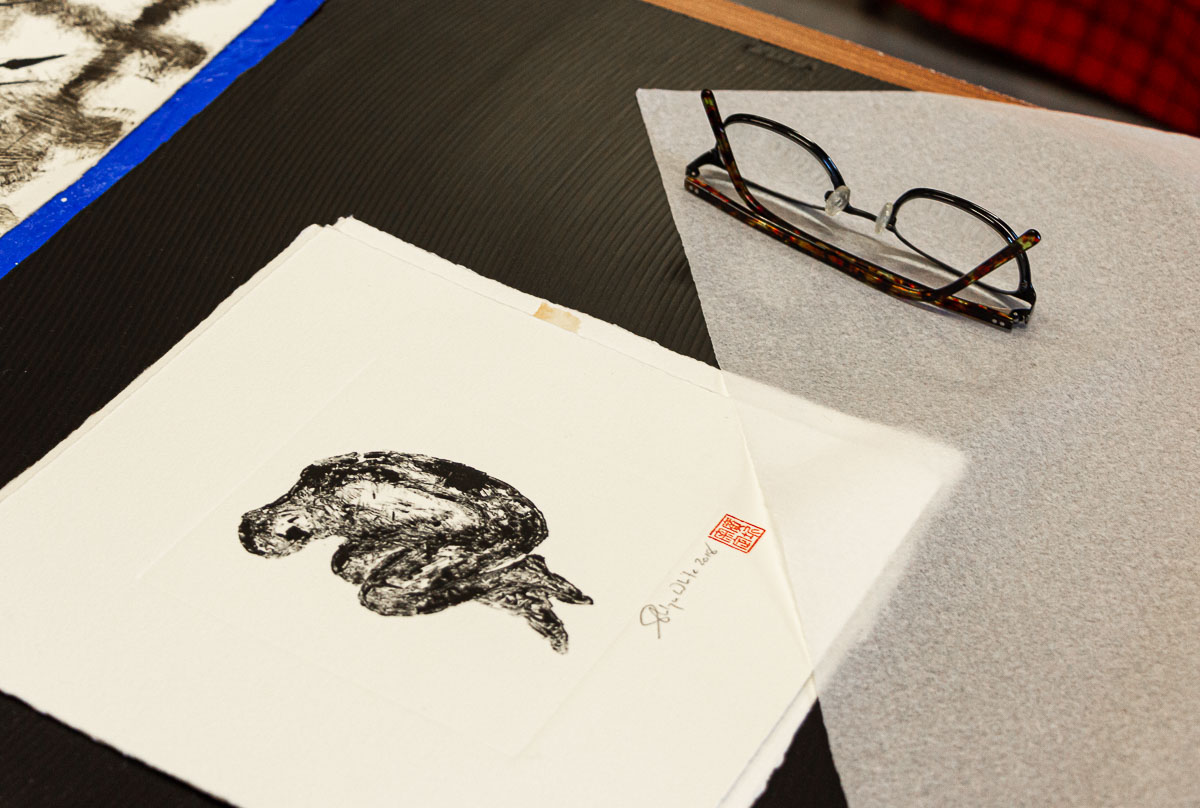
Is there ever a message or something you are trying to say in your work?
I think the correct word is try… you know, it's like Yoda. Yes I do try sometimes, but it's not really true to my nature. I think my nature has always been to work with presence and to be very much in the present moment when I'm creating a piece so that it becomes a reflection or it comes like a Kodak moment: it's just that moment captured, a feeling of presence, which in it's own sense is a feeling of the eternal.
I don't think I have a message apart from that because I think if human beings are truly present, we're much kinder. We're much more generous, but a lot of our actions are based on our experiences in the past, so they're reactive. So if we feel that something bad was done to us, then we react negatively in a situation, and so on. But if we are present in a situation we read it for what it is. Maybe we still choose to react negatively, but we would have a choice.
Do you ever feel pressured to create work with the intention to sell it?
No. I've been fortunate in that I've always been prepared to do other work to keep this space free… so I will do any work I can so that I don't ever have to create something for someone to buy or to sell it - or to ever have that in my mind. Because I think once that sets in, it's a kind of rot and a very difficult space to be. It's like the “I'm going to be someone everybody likes” space. And I know that space, I've been in that space, and I've tried to do that - everyone does. So I keep away from that. I hardly know what goes on in the art world. People say, “oh, do you know so and so? They're doing great work”… No, I don’t.. I probably should know them. But the reason I don't know them is because I get so influenced. So the art world I tend to inhabit more, are books. Primarily the thing I do best in the world is read.
I noticed you often quote poetry or reference writers when describing your artworks, so does that have a big influence on your art-making process?
Yes. I love words. I'm thinking of doing an artist book this year to bring words in – you know, use the artworks but then write the stories behind them, or some sort of commentary with it. I think I'd like to write a book as well. I've come to the stage I think - all that reading has to go somewhere. I'm really a reader who paints, I'm not a painter who reads.
Books are really the world that has the most influence for me, much more than the art world.
"What printmaking like this gives you that I haven't found in any other medium is you can get the very thick oily marks, but you can get watery marks too because these are all water-based. It's got that lovely viscosity of oil, but you can then get this very watery movement coming out."
So now I have to ask, what are you reading at the moment?
I'm reading two very diverse books right now. I'm reading ‘The White Book’ by Han Kang, which is wonderful - if you haven't read it, you should. Have you read ‘The Vegetarian’? You better get to it and also - even better than The Vegetarian is - ‘Human Acts’. Oh that's just breathtakingly wonderful and this is beautiful too, I love reading this.
And then as a complete sort of resting opposite I have ‘Big Magic’ by Elizabeth Gilbert. She's got a podcast, the Big Magic podcast, and they're wonderful. That's how I got into this one because I was listening to it in the car and I really resonated with it. I admire her because she also says you don't have to be 'the great artist'. So it's really nice to hear a fellow person who thinks this way and I think it's very sad that we've created this model of what artists should be.
How did you start working in this medium of printmaking and creating your monoprints?
I actually started with drypoint etching, which is actually not me at all because it's very controlled, it's very fine, and I prefer big gestures and a larger movement. I love paint and the thing with the monotype inks that I use is they're very like paint. Very thick, so it's really like working with oil paint.
I have done some oil painting in the past, but I'm extremely allergic to turps, I get nosebleeds. So I decided this was not a way for me to go but what I enjoyed about oils was the viscosity, the sculptural part of it. You can really shape the paint.
What didn't work for me obviously was the the nosebleeds primarily, but also the canvas is very bouncy. What printmaking like this gives you that I haven't found in any other medium is you can get the very thick oily marks, but you can get watery marks too because these are all water-based. It's got that lovely viscosity of oil, but you can then get this very watery movement coming out. I think you can also get that with turps, but yeah, it's problematic for me.
You can get very strong bold marks and these very faint suggested marks too, so it's kind of the Yin and Yang. These lovely hatchings are made with a water based pencil. If you spray some water on and then you just slowly wipe it off, you can leave these marks so it really lends itself to Yin and Yang expression.
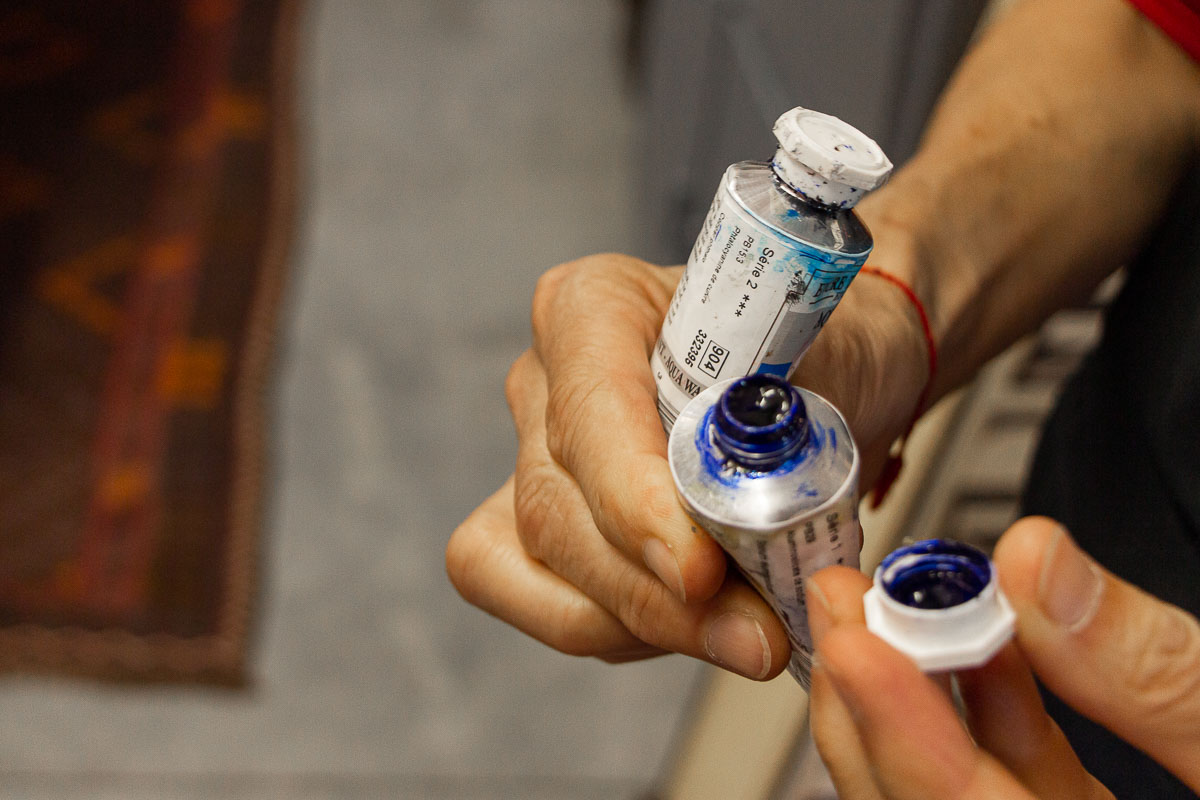
How much control do you have over the final artwork?
Ah, well, that's the beauty of it and part of the fun. You do your best on the plate and off it goes. When it comes out you don't really know 100% how it's going to pull off there, but that gives you a bit of Magic, you know? That you're not in control of everything, and I like that. I like to know that I do what I can and then the rest I just say, "Well, leave it up to the creative good."
It's a very good medium for movement because at the plate you can be light or you can be vigorous, you don't have to be careful. So it suits my gesture.
I think that's what you've got to find: whatever suits your gesture and then be true to it and stick with it. And have fun with it.
What draws you to abstraction?
The more abstract side interests me because I look at a lot of things and make my own stories of what I see - for example there in the splash marks above the sink I can see a figure now... So I want people to have that experience of forming the stories and using their own creativity in their head, their imagination. Which is why I'm not really great on figurative because it's like, well, I can see that's a face. I like to find the face. I mean, Da Vinci found faces in mould and I'm sure people went, "that's just mould, Leonardo".
What I hope to engage with people who look at my work is their own imagination. For me it's not enough that you just look at it and go, "Oh yeah, nice." Because there's no imagination going on. I want people to really look and go, "What is that? What's happening here?" and then to actually push themselves to work with the work and engage with it and and create something in their own heads.
I consider the arts closest to my work are music and poetry. That's where I actually get most of my inspiration. Obviously, past Masters are influential but a present tense influence that I work from and ground myself in - it's music and it's poetry. I think both are very abstract, but we listen to music every day and we don't go, "What does that mean?"
I noticed that some of your abstract works reference places you have visited...
Yes, at the beginning of lockdown when I was suddenly confronted with not being able to travel it just brought up all these places that I had visited in the past that I suddenly can't go to. The memories of places. It was really interesting to explore how I remembered and put them together in my mind. I deal a lot with the emotion of memory, because I think that's what music is. I think poetry too, but I find music always brings me back to places and so I was working with this idea of revisiting places in my head and putting them down on paper to express that feeling. Of course then you end up with this blur of all of these places just sitting on top of one another, and they're not spaced out as you would on a postcard, and I thought that was interesting.
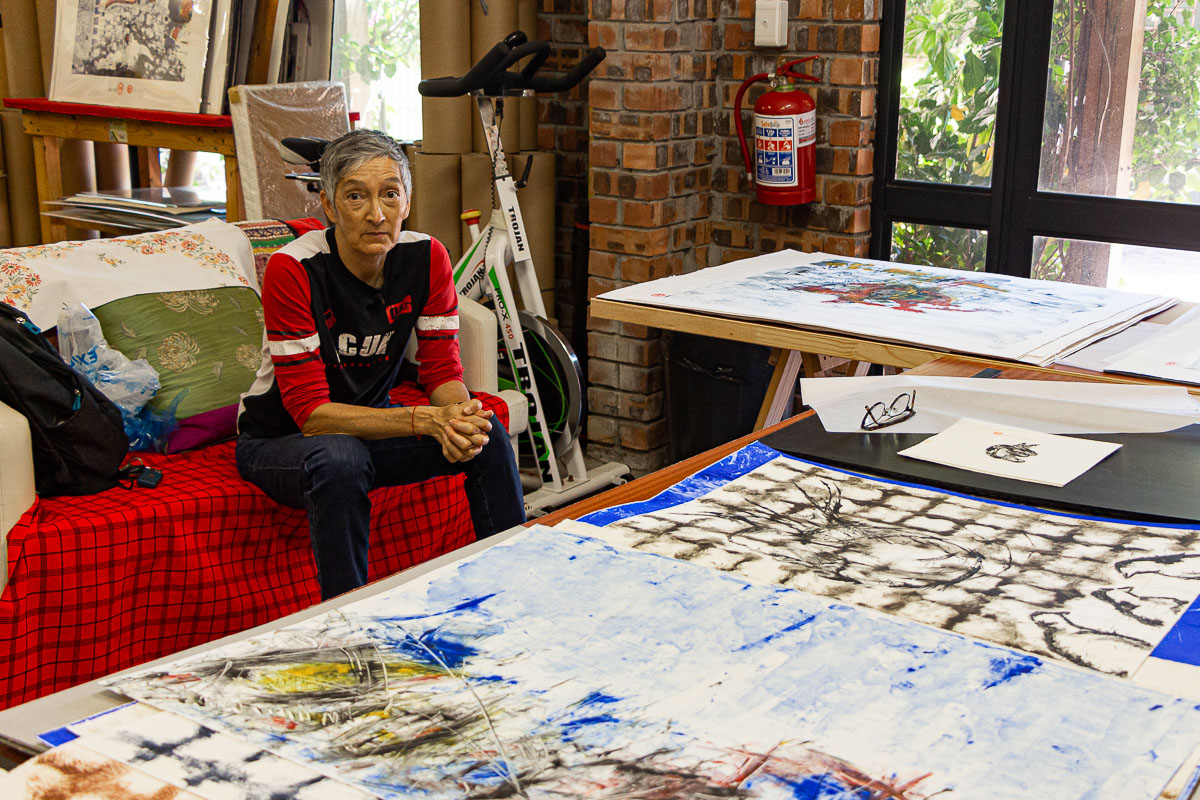
Thank you for all this incredible insight into your creative process and art. My last question for you is: what are planning to do next?
Well, I've decided for the rest of the month that I'm just going to put aside an hour a day where I sit down and I do nothing. I'm not allowed to do anything: I'm not allowed to read, not allowed to write. I make a cup of coffee or tea and I have a biscuit and I just sit. I have a notebook and I wait for ideas to visit. So I’m having an “ideas tea party” and whatever comes I write down, if no ideas pitch up, it's fine.
Then, at the end of the month I'll have a look and see what ideas are there and if anything still grabs me, doesn't grab me. If there's something I want to do, not do. And then I'll slowly get started again. But for now, in terms of creating images, I find it's more important not to do anything. It's time to just look at stuff, think about stuff, put that hour aside, read – lots of reading! One of the things I really love about these times and I don't love at the same time, is the feeling of not being productive. I have obviously inherited all this from Catholicism and Calvinism and this pressure to always be producing something or working on something. And now instead, I want to arrive back at the beginning… In Zen they call it ‘beginner’s mind’. You start again as a beginner, because as a beginner you've got freedom. You explore, you have fun, you create new things. But in the expert's mind there are fewer possibilities; as an expert it is easy to do the same things again.
For me, finding this ‘beginner’s mind’ is a very important part of my overall process. I go through months, years of productivity and really working to an end point of a particular style or idea I wanted to explore. Then finally I've done it, I've reached the end - that's it. And then I've got to let all that go and do what I'm doing now so that I can literally start again – because I've forgotten everything else. I think this time is really about forgetting all the stuff I've worked on and getting it out of my head so it can be empty again.
Although Shui-Lyn is taking time out to breathe, she is currently working on Vortex, a collaboration with Christiaan Diedericks, and a promising exhibition of works from the collaboration centered on Dulcie September for the Mandela Foundation.
See available monoprints on paper by Shui-Lyn White for sale here.

